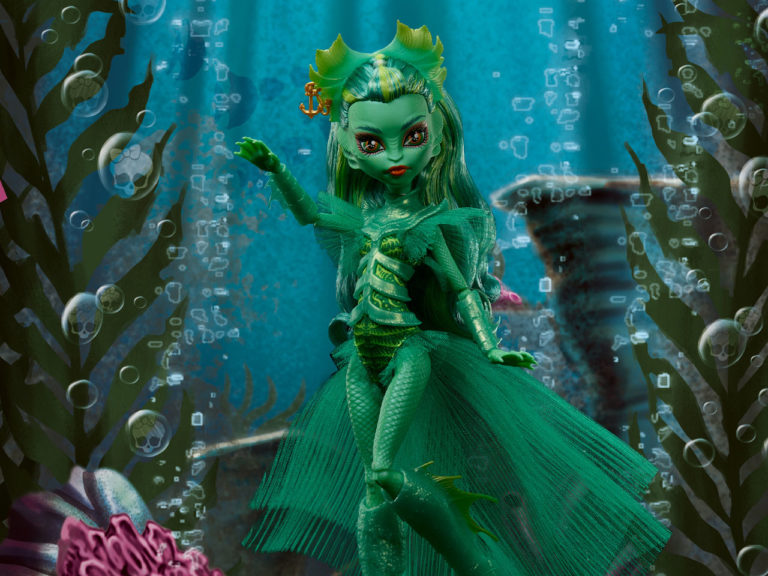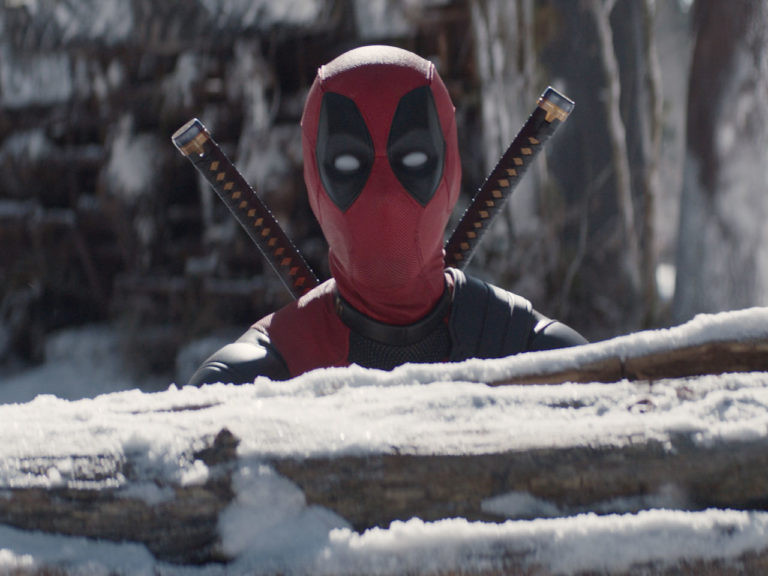

We all know how I feel about Sean Ryan as a writer, so this might surprise some of you when I say that this issue wasn’t that bad. Trust me, I’m a little shocked myself. If you’re familiar with my reviews of New Suicide Squad during Ryan’s run, then you’ll probably remember that one of my biggest hang-ups with his narratives were that they lacked logical character/ plot progression. Well, lucky for Mr. Ryan, that opportunity plays no relevance here because the narrative takes place in Harley Quinn’s mind. Yes, this issue is one, big, nonsensical, roller coaster ride… literally. As in: there’s an actual (but also metaphorical) roller coaster that represents Harley’s life. Make what you will of that…
I will admit that while this installment is better than I expected, for the final chapter of New Suicide Squad, it’s far from perfect. First off, and this is the only time I’ll mention this, but considering Harley has a number of her own titles that she stars in, it would have been nice if this chapter focused on the actual Squad rather than just Harley Quinn, or at least a member other than Harley. Select members of the Squad do appear – in a sense – but if you were looking for a team story to close out this title, then I’m sorry to tell you this issue isn’t for you. However, if you’re looking for a Harley story, (which is probably what the majority of you are looking for), then you will be pleased!
So what should you expect from this chapter? Chaos a la Harley Quinn. Focusing on Harley’s psyche, Ryan delves into her mind to try and determine why she’s crazy, as well as how she can free herself from her insanity. It’s a hopeless notion presented in a convoluted format as Harley shuts down during a therapy session, but it works. Harley’s psychiatrist is asking pressing questions, but Harley doesn’t have the heart to answer them. Instead, she just wants to escape. But it’s not just the session she’s trying to flee, she’s also trying to escape her identity.
Much like the real world tends to perceive her (meaning us, the readers), so much of who Harley is, is shaped from what the Joker did to her. We’re used to reading various interpretations of Harley’s awareness of this – after all, it’s been a go-to plot thread for her character for years now – but the interesting thing about this issue is that rather than just focusing on how much the Joker changed Harley, it also focuses on a number of her natural psychological traits that he just enhanced.
When we think of Dr. Harleen Quinzell, we often think of the mild mannered, soft-hearted, and potentially brilliant psychologist that embodies a perfect example of the effects of Stockholm syndrome. What we don’t think about, or often see, is the suppressed, inner child that existed within her even as an adult prior to her “tragedy.” As the story skips around to different parts of Harley’s life, we get to see instances of her perception of herself as a child, a teen, a young adult, and a doctor. All of the scenes swirl together in a dreamlike sequence, dodging in and out of each representation of her identity.
Trying to determine what is actually taking place in this book is a losing game though. While that alone can keep you on your toes from page to page as you try to sort through the insanity, the overall themes are blatantly obvious. From the beginning, it’s clear where this issue is heading thematically, but thankfully, it doesn’t hinder the experience. What I didn’t enjoy, however, were the heavy handed metaphors. While I admit I thought, “This isn’t as bad as I thought it would be” throughout the course of these twenty pages, I also found myself thinking, “Of course Ryan would pick something this obvious for symbolism” more than once. That doesn’t mean this issue is void of brilliance either. In particular, there are two pages that deliver near perfection. I’m not sure who deserves the credit here, Ryan or Cliquet. Regardless, of the inconsistencies throughout this chapter, this is still a pleasant one-and-done issue featuring our favorite psycho!
The Art: Overall, I thought Cliquet’s art was decent, but it was incredibly inconsistent and a chunk of the time, I felt like he failed to take full advantage of the opportunity in front of him. This entire issue is essentially a dream sequence, but instead of running with that, he kept most of his panels pretty bare. Yes, there are times when less is more (for example, the title page), but when you have a mind as crazy as Harley’s, the background shouldn’t be as baron as it is here. I don’t necessarily want to nag on what’s here, but I will nag about what isn’t.

Breakdowns for this issue can be found in the spoiler tag.
The Good: These two pages.


I didn’t notice this at first because I was so focused on the narrative specifically, but as I started writing my review, I realized the brilliance of these panels. At a spitfire speed, Harley recalls various points in her life, and how they led to her downfall. There are portions where Harley’s mother is speaking to a teen version of her (or perhaps it’s just two assumed versions of herself: the psychiatrist and “criminal,” each representing the social norm of how they would be perceived based on their behaviors: an adult opposed to a child… I think it’s left up to interpretation). This alone is interesting on it’s own, but then I noticed the back and forth between Dr. Quinzel and her boss.
There are various panels where we see Harley saying things like, “I’m bored” and “It’s just the same old thing every time…” and in the background, the picture behind her changes from a mask with two shades (Two Face), to a scarecrow in a field (Scarecrow), before she accepts an offer to oversee a new, deranged murderer, at which point she proclaims, “Let me at him” while a picture of a clown (the Joker) is in the background. Brilliant.
To make it even better, the picture behind her boss changes as well from a cat climbing a rope, to the same cat struggling to climb the rope, to the cat falling off the rope, creating a blood spatter… each of these symbolizing Harley’s own personal decline. Whoever was behind this receives a 10/10 for this moment!
Harley’s desire to be something different. We saw glimpses of this in the Harley Quinn April Fool’s Special, as well as a terrible attempt during Sean Ryan’s New Suicide Squad run, but DC really seems to be pushing Harley into a new direction. They’re making her more reflective and self-aware than I ever remember her being. They’re also focusing heavily on redemption and change. It’s an interesting approach and it has my attention, but I don’t want Harley to ever stop being crazy or fully transition to being “good.”
Harley is psycho-analyzing herself. This is one of those moments that I knew was coming from the first page (when they didn’t show the therapists face), but despite its level of obviousness, I do think it still makes the topic more interesting. The fact that she is pushing herself into this self-realization and study says a lot about where she is as a character, and ties into my point above. I’m growing more and more curious of how this will unfold in Suicide Squad.

The Bad: I mentioned this earlier, but having an actual roller coaster symbolize Harley’s life is lazy. This was one of my stronger moments in thinking, “Seriously, Ryan? You couldn’t think of ANYTHING better?” And of course, the roller coaster changes from red to purple and green… like that also wasn’t obvious.

The dialogue. There are times when the dialogue really bugged me. The first few pages were a little rough, as well as the bit with Batman, and the panels with the teeth. I didn’t hate it, but it definitely didn’t work for me…

Recommended if:
- I don’t know what the name of Harley’s fan club is, but if you’re part of it, then this issue is for you!
- You find crazy people’s mental instability entertaining.
- You’ve ever said the words “psycho-babble bull$#!%”
Overall: In a surprising turn of events, Sean Ryan delivers an issue that focuses specifically on a character, and it isn’t terrible. Moments of brilliance appear, but the issue is mostly clichéd metaphors and predictable conclusions. Despite those downfalls, this is still a nice one-and-done read that is sure to satisfy any Harley fan.
SCORE: 6.5/10


